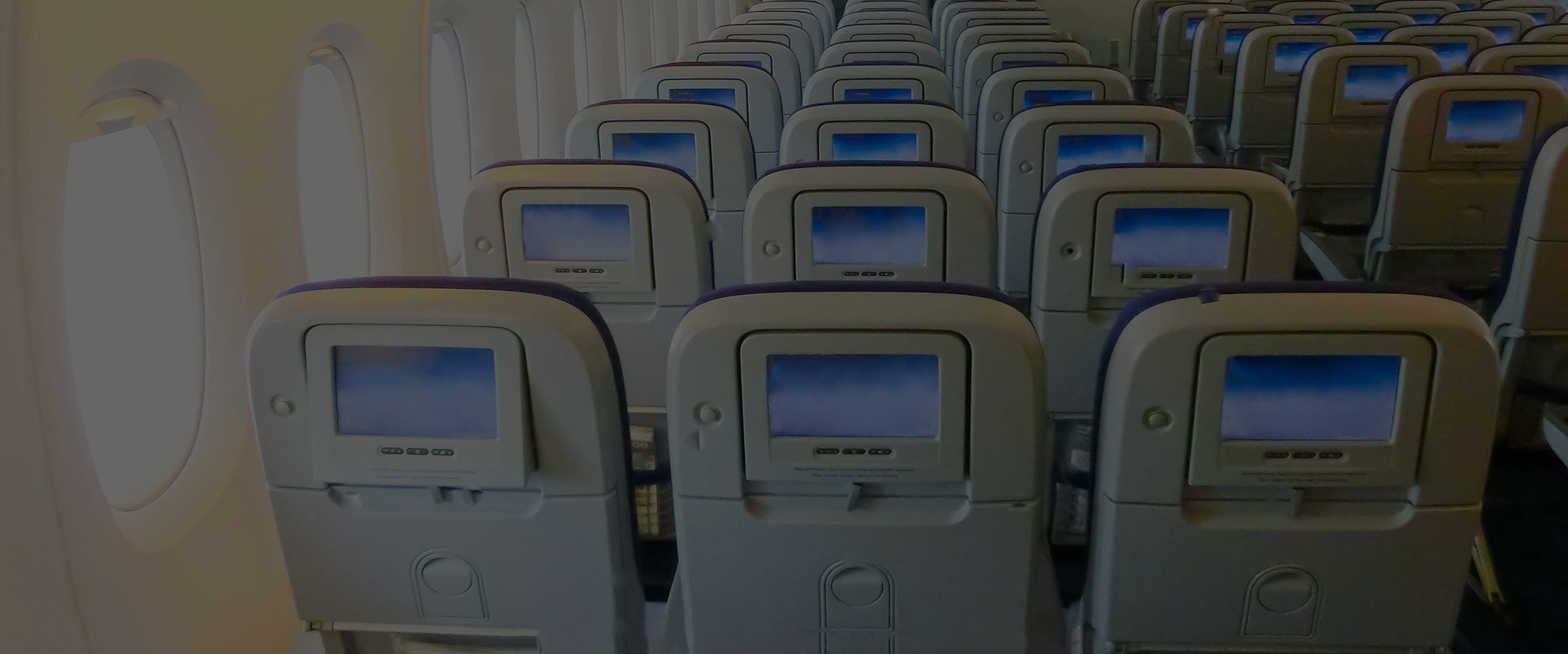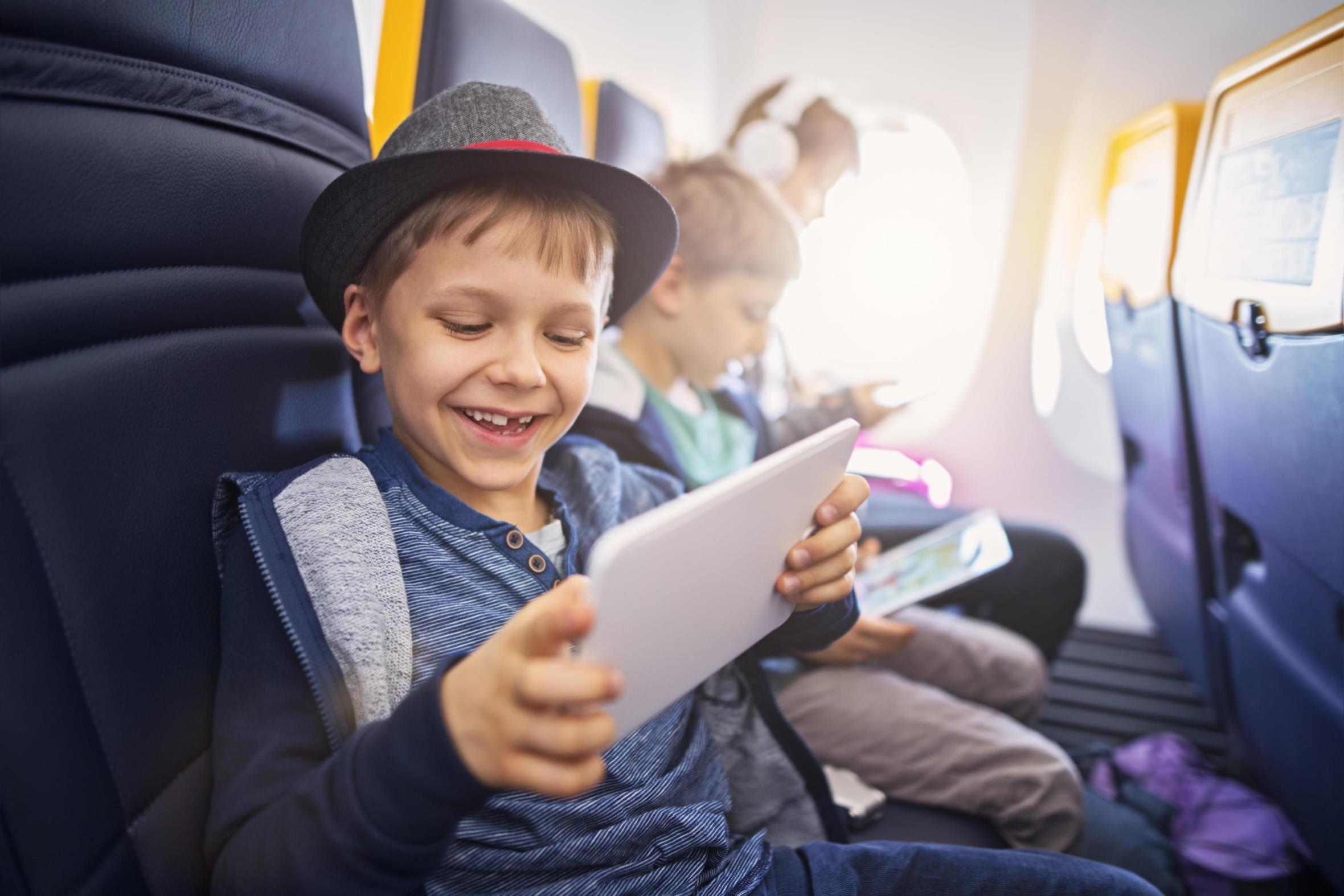A diversion is something you don’t often want while flying. The type that sends your plane to an unscheduled destination due to weather or an emergency is an inconvenience at best and it usually is more than that. But we’re going to talk about that kind of diversion. This one deals with passengers and how they relieve the stress of travel while inside the confines of an aircraft cabin. While in small spaces, often with strangers who might not be on their best behaviour, diverting one’s attention toward more enjoyable pastimes is a must. Enter the world of in-flight entertainment.
Your Attention Has Been Diverted, And That’s a Good Thing
For flyers, the go-to diversion has always been reading. Many passengers still carry books, and e-readers are nearly as ubiquitous as smartphones, many of which are used as e-readers. You still see in-flight magazines on most major airlines and even though they’re a mostly a vehicle for advertising condos in Miami, or self-help seminars, or getting that forever youthful body, they’ve almost always been there to divert the eye of the nervous flyer or the passenger simply looking for some way to pass the time without staring at a seat back – or someone else – for hours on end. Anyone care for a crossword puzzle; hopefully one that’s not already filled out? In-flight entertainment is big business and the fact that it continues to evolve tells us that passengers still enjoy passing the time to combat in-flight boredom. It also tells us that no one’s really quite perfected it yet.
The value of in-flight entertainment, better known as the Tweet- and text-friendly acronym, IFE, can be very subjective. And just like anything that’s in the eye of the beholder, opinions over quality and satisfaction differ. You might recall from a previous article we wrote about the last 25 years of air travel that in-flight entertainment has gone from the big(ish) screen to the small screen and has seen everything in between. IFE has undergone such an evolution that it might have completed a full circle, back to where it all began.
When is the last time you asked the flight attendant for a deck of cards -- and actually got one? When flying was something of an upper-crust affair, service ruled the in-flight experience. From meals and settings that today would be considered lavish, to cocktail lounges complete with pianos and sofas, if you had a little bit of money, flying was actually quite the experience. For those on the “pointy” end of the aircraft, there certainly were things to do. For those further back in the aircraft, airlines had to get a bit more creative. And they did.
Members of The Bored
Airlines that prided themselves on their service certainly didn’t ignore passengers in coach. It’s just that as airplanes got bigger and cabins got busier, keeping the masses happy was quite the challenge. Yes there were cards, magazines and newspapers to be had. For the kids, there were – and in some cases still are – coloring books and games. As far as in-flight movies, that idea actually started in the 1920s but it wasn’t until the 1960s and the jet era that they became a, pardon the expression, regular feature. When things turned wide, and we’re talking wide-body more than widescreen, the theater in the sky came into its own. Now, we had ourselves a movie experience at 35,000 feet. All that was needed was a set of tubular headsets that connected into an armrest socket and looked more like stethoscopes than movie accessories. That movie was played on a screen affixed to each bulkhead and was projected from a device hanging from the ceiling that also housed the cartridge containing the film. On a long flight, you got more than one movie if you were lucky, but everybody had to watch the same thing.
Not into movies? Audio on a loop was also a feature on many flights which offered a limited number of channels of music, talk and special interest segments. There was one airline, United, that actually allowed passengers to listen in on the air traffic controllers via a dedicated channel. For many airplane geeks, this was the best audio channel in the skies ever created. Now, back to the movies.
As in-flight entertainment became a viable outlet for movies, Hollywood found a dedicated audience and offered airlines some popular titles after their theatrical runs were done. Of course, airlines being concerned about family-friendly content preferred edited versions to cut out expletives, offensive content, or any scene that could upset a nervous flyer, like a plane accident. From film cartridges to VCRs, the single movie feature was the entertainment staple until the introduction of in-seat personal video devices in the 1990s followed by the seat back screens we’re familiar with today.
However, it was a tragedy in 1998 involving overheating entertainment equipment that cast a dark shadow over the future of in-seat entertainment. A Swissair Flight from New York to Geneva crashed off the coast of Nova Scotia after an in-flight fire. It was determined that a short in the wiring related to the entertainment system contributed to the accident, though other factors were involved, such as materials, shielding, and the way the wiring was bundled and routed over the cockpit where the fire intensified. The aircraft, an MD-11 made by McDonnell Douglas Corporation (now part of Boeing), had made its entertainment system a selling feature. As with most accidents, lessons were learned and changes were made leading to the systems used today.
From the 1980s through the early 2000s, the single screen at each bulkhead gave way to multiple screens along the length of aircraft cabins, but it was the advent of the internet that became a game changer. Once airlines cleared the financial crisis a little under a decade ago and began making a profit thanks to ancillary fees, the ability to equip aircraft with in-flight connectivity for passengers changed the perception of airline fees as an annoyance and reset the trajectory of in-flight entertainment. The power was literally in the passengers’ hands.
Over the last several years, many airlines have ordered aircraft with entertainment systems built into the seat backs in each row. From live satellite television to a selection of digital movies, passengers now have the luxury of channel surfing right from their seats. But with the proliferation of in-flight Wi-Fi, even this little perk might be running its course.
Coming Attractions
The future of IFE brings us to the beginning again – sort of. In the name of fuel efficiency, weight reduction and streamlined costs, airlines are now considering seat backs with nothing to entertain you. Are we going back to staring at dog-eared safety cards and a sickness bag? Probably not, but there will be a few transitions to go through.
The proliferation of in-flight Wi-Fi has meant that passengers can carry their own devices to receive streaming content directly from the airline’s entertainment system. You’ll likely still see seat back screens for quite a while since long-haul aircraft flying international routes don’t all offer satellite-based Wi-Fi. Also, the makeup of flyers on some routes means that fewer passengers might be equipped with their own devices. There will also still be a bit of a hybrid experience in which passengers without their own devices might be able to rent or borrow a device from the airline itself.
There’s also this little tid-bit to please movie purists: Airlines won’t have to insist on as much family friendly versions of movies as before since the plethora of choices leaves plenty for wholesome entertainment seekers and fans of edgier content alike. As connectivity evolves, passengers are in full control of their IFE experience, whether that means taking in the latest unedited films, catching a live television broadcast, or taking part in the time-tested diversion of reading. Oh, and there’s one more thing.
Talking, The Radical Idea We Tend to Forget About
When all else fails, sometimes by way of a technical glitch, one of the most entertaining things you can do on a flight is engage your neighbors in good old fashioned conversations. That is unless you prefer being the strong silent type who likes to be left alone. There’s nothing wrong with that.
One of the most interesting dynamics to come from the sadness after the terrorist attacks in 2001 was a sense of community among passengers. In the quest to seek out something “just not right”, many passengers began communicating with seat mates, getting to know much more about the people inside the confines of an aircraft cabin than they ever cared to. Interestingly, that small space filled with small talk opened a whole new world of enlightenment and understanding among passengers – at least for a while. It’s worth a try if you’re so inclined. It definitely could make the time go by more quickly.
Pie in The Sky or Pie in The Face?
The love-hate relationship with air travel can be seen in how it’s perceived by passengers. It can rightly be touted as the safest form of transportation and also derided as mass transit in the skies. If that makes you immediately think about a bus in the sky, you’ll be amused to know that someone already thought of that and created an airline named Skybus Airlines in 2004. It no longer exists, but the image of the experience such a name conjures up remains among many flyers. Fun fact: the motto of the airline was “only birds fly cheaper.”
The immediacy of social media commentary by self-appointed sky jurists casts a white-hot light on the industry, especially when it comes to airline service.
In-flight entertainment has had the effect of drawing attention away from the mundane drone of aircraft engines and maybe even a few bumps in the flight during turbulent weather. It can calm the jittery flyer as well as the restless child. Airlines have been looking to keep the masses happy for many decades. In this regard, IFE can be viewed as a tonic or vaccine against the irritations of flying or a tasty treat for the eyes and ears.




